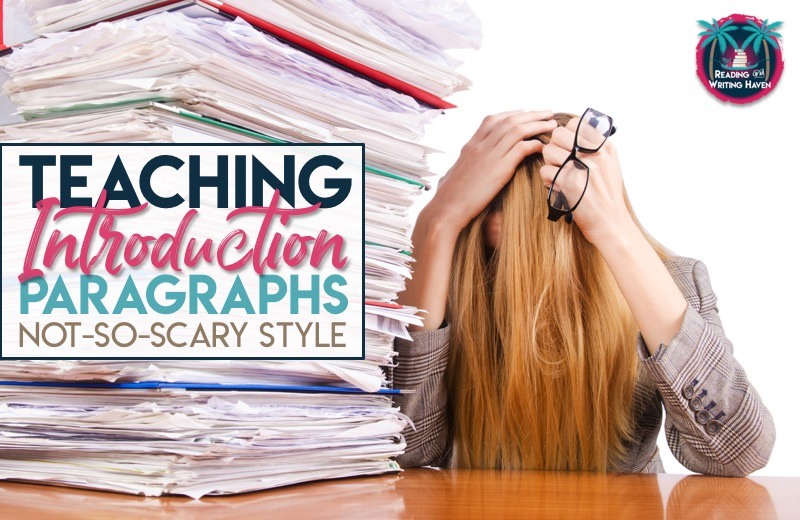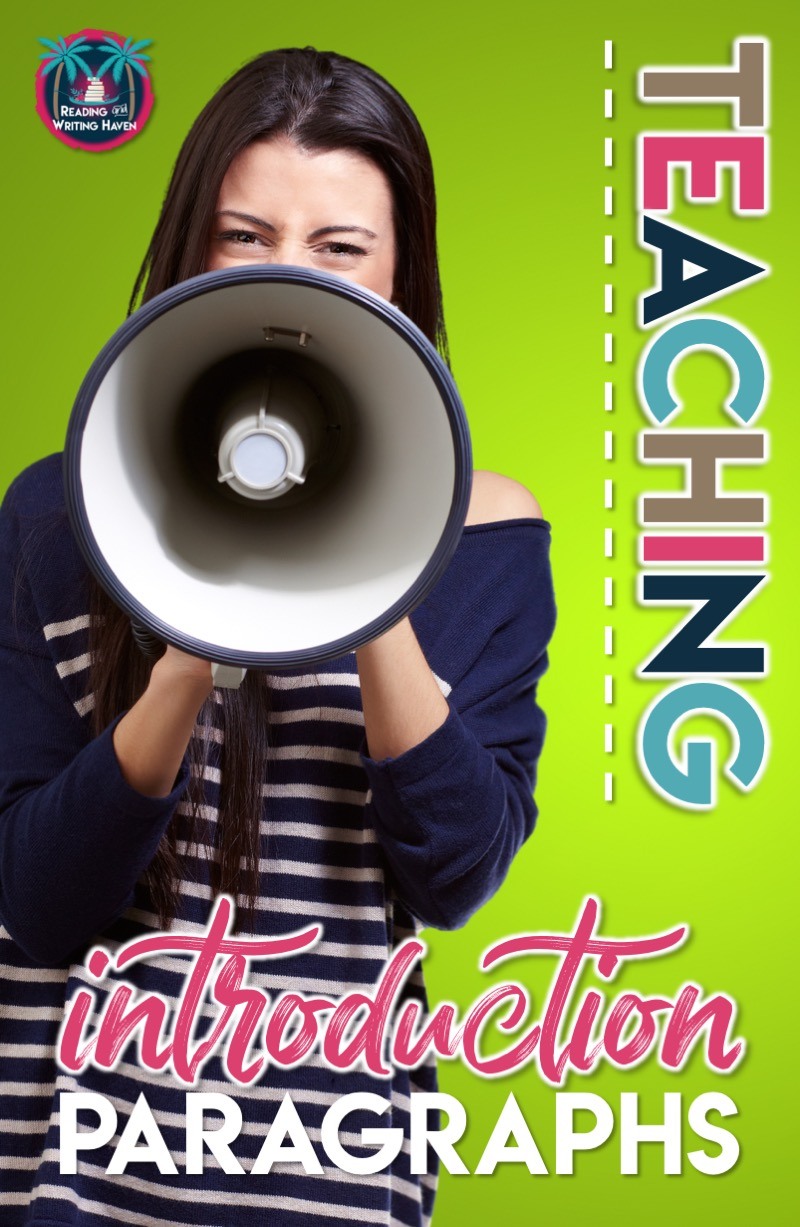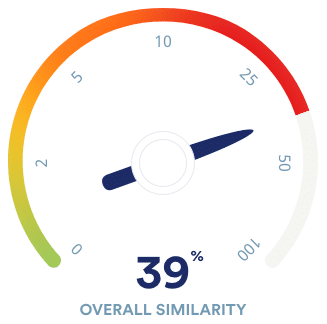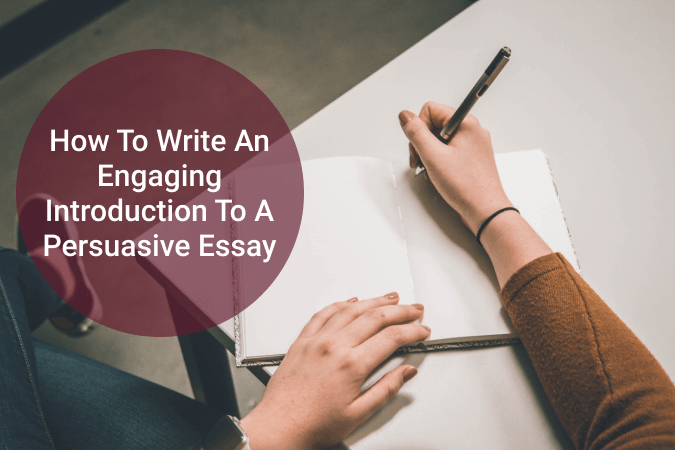
I always begin teaching students how to write an introduction paragraph by asking students to define their view. We begin by discussing how we would write thesis statements for debates that students would understand without much research. I explain to students that in an argumentative essay, the thesis statement is also called a claim because they are arguing a specific point. I want them to associate the term thesis statement with every essay we write, but it’s important that they know the word claim as well.
After time has lapsed, have students pass again in the same direction. Do this as many times as you can before they lose focus or before the period is over. This activity can also be conducted digitally. I just prefer the paper version because it feels more authentic and is easier to manage.
I like to give my students specific examples of strategies they can use as hooks. I also provide examples of each and then ask them to practice, which can look many different ways. Here are a few ideas:
I find it important to give students feedback on their introduction paragraphs before moving on to the body of the essay. Feedback is an opportunity to boost students’ confidence. They will enter the next stage of their paper knowing their foundation is solid. But, feedback doesn’t have to always come from the teacher.
Identify the main points of argument.

Even though I don’t ask students to list their main points in the introduction paragraph, I consider it part of writing an intro. They need to understand whether or not their thesis statement can be developed with sound research. I give my students a graphic organizer that allows them to view the main points as pillars that support the thesis statement. If they can identify at least three solid pillars and provide evidence from research, they are approved to move on. (I do require students to begin collecting sources during the pre-writing stage, and I encourage them to tweak their original Works Cited page as they draft and revise.)
Honestly, getting students started with their essay is the hardest part. Because I have a compulsion to reflect on and analyze my lessons and units, I am always trying to come up with no-fear, sensible ways to help students approach writing. In this post, I’m sharing the methods I use to make writing an introduction paragraph for an argumentative essay more transparent and concrete.
Perhaps you stumbled on this post after reading my prior post about choosing a research topic. Or, maybe you googled “how to write an introduction paragraph” because you are struggling to come up with a way to make introduction paragraphs less daunting for students.

The length of each part depends on the length and complexity of your essay.
Example: Signposting This essay begins by discussing the situation of blind people in nineteenth-century Europe. It then describes the invention of Braille and the gradual process of its acceptance within blind education. Subsequently, it explores the wide-ranging effects of this invention on blind people’s social and cultural lives.
A good introduction paragraph is an essential part of any academic essay. It sets up your argument and tells the reader what to expect.
You can use the checklist below to make sure your introduction does everything it’s supposed to.
Well done!
The structure of an essay is divided into an introduction that presents your topic and thesis statement, a body containing your in-depth analysis and arguments, and a conclusion wrapping up your ideas.
As you research and write, your argument might change focus or direction as you learn more.
A thesis statement is a sentence that sums up the central point of your paper or essay. Everything else you write should relate to this key idea.
This introduction to a short expository essay leads into the topic (the invention of the printing press) and states the main point the essay will explain (the effect of this invention on European society).

First, use an attention-grabbing hook sentence. Therefore, provide readers with a hook phrase to gain their full attention. It can be a funny fact, anecdote, previously unknown information, quote, or a certain definition. It must be something to keep readers hooked on your paper. Moreover, add background information into an opening part. The last sentence is always a description and explanation of a thesis statement.
When you need to perform a perfect persuasive essay, be ready to pay a lot of your time and effort. It can be difficult to write an essay at first. Moreover, you need to pay your attention to every aspect of your paper. In fact, you need to share your point of view where making strong points, use strong words, and convincing conclusions. An attention-grabbing introduction is necessary. It assures the fact that your readers will read the entire essay eventually.
A persuasive essay is a special type of academic paper that is aimed at convincing readers to share the author’s point of view. You need to persuade your readers with the information revealed. It can be difficult to prepare an excellent essay. Often, you need to deal with a very complex subject. If you need to write a perfect paper, be careful with every detail. A proper structure of an essay is essential. It defines the final success of your persuasive essay and the way it influences your audience.
A persuasive essay has a standard essay structure. Often, writers prefer a 5-paragraph essay format the most. In general, an essay requires a strong and attention-grabbing introduction, informative main body parts, and a short and snappy conclusion.
How to Write an Engaging Introduction to a Persuasive Essay
You can use various quotes, anecdotes, interesting facts, or controversial sayings in order to start your essay effectively. Use any available persuasive tools to support your point of view. Do not hesitate to write down your unparalleled ideas even if they look too provocative. Follow the writing requirements when completing an essay. Be very attentive to details and make sure to check an essay a few times before submitting it.
There are many useful tips and guides on how to accomplish an academic task without a glitch. In fact, your writing talents can be very helpful. Be ready to use your analytical abilities as well since the persuasive essay is the type of research paper. This piece of writing requires a profound analysis of a subject. You need to reveal your point of view based on strong arguments and supporting evidence. Further, you must persuade your readers to share your opinion.
There is no need to write down all the arguments and supporting evidence into this part. You will write them down into the main body part. State a brief and informative thesis statement. Always check your paper before submitting it to your tutor or college professor.
An essay outline is an important element of every essay paper. It allows you to bring together the entire paper’s elements properly and assuring a requested essay format. An essay outline can be used as a writing plan. It allows you to deal with every part of an essay accurately. Moreover, an essay outline makes it easier to come up with every separate argument, its supporting evidence, important facts, concepts, and explanations.

After time has lapsed, have students pass again in the same direction. Do this as many times as you can before they lose focus or before the period is over. This activity can also be conducted digitally. I just prefer the paper version because it feels more authentic and is easier to manage.
I find it important to give students feedback on their introduction paragraphs before moving on to the body of the essay. Feedback is an opportunity to boost students’ confidence. They will enter the next stage of their paper knowing their foundation is solid. But, feedback doesn’t have to always come from the teacher.
Even if students manage to come up with a hook they like and a sound thesis statement, they generally struggle with what to write in the middle. I explain that the middle of the introduction is a bridge in two different ways.
Honestly, getting students started with their essay is the hardest part. Because I have a compulsion to reflect on and analyze my lessons and units, I am always trying to come up with no-fear, sensible ways to help students approach writing. In this post, I’m sharing the methods I use to make writing an introduction paragraph for an argumentative essay more transparent and concrete.
Make feedback social.

Even though I don’t ask students to list their main points in the introduction paragraph, I consider it part of writing an intro. They need to understand whether or not their thesis statement can be developed with sound research. I give my students a graphic organizer that allows them to view the main points as pillars that support the thesis statement. If they can identify at least three solid pillars and provide evidence from research, they are approved to move on. (I do require students to begin collecting sources during the pre-writing stage, and I encourage them to tweak their original Works Cited page as they draft and revise.)
Perhaps you stumbled on this post after reading my prior post about choosing a research topic. Or, maybe you googled “how to write an introduction paragraph” because you are struggling to come up with a way to make introduction paragraphs less daunting for students.
I like to give my students specific examples of strategies they can use as hooks. I also provide examples of each and then ask them to practice, which can look many different ways. Here are a few ideas:
I always begin teaching students how to write an introduction paragraph by asking students to define their view. We begin by discussing how we would write thesis statements for debates that students would understand without much research. I explain to students that in an argumentative essay, the thesis statement is also called a claim because they are arguing a specific point. I want them to associate the term thesis statement with every essay we write, but it’s important that they know the word claim as well.

A good introduction should have background information on the topic, a thesis statement, and a brief summary of the main points. Provide relevant background before revealing your thesis (main argument). Write your thesis before Persuading the reader your essay is worth reading
Another way of convincing a reader to read an essay is by providing a questionable or challengeable thesis.
Your thesis should be concise and clearly inform the reader of your stand on the given topic.
Writing it last is a smart approach., since by then, you will have a clear idea of the direction of your essay, and you will have mastered the content of your essay.
Final Thoughts
That explains why good introductions have background information on the topic, a thesis statement, and a brief summary of the main points.
An excellent introduction paragraph for an essay not only introduces your essay but convinces a reader that it is worth their time reading your essay.
When summarizing your main points, do not reveal too much information: What will be the point of continuing to read if your audience already knows everything in your essay?
It is the first thing a reader comes across
